project development#
review #1(Jan 29)#
about my final project#
As the first Japansese fabricademer, I want my first project to be something based on Japanase origin. As to fabric, kimono is the representative traditional costume of Japan.
During Edo period(1603-1867), Japan was a sustainable society, and kimono is totally circular fashion explained in an image below. I believe that the combination of Kimono and circular fashion is a good motif for final project.

(image source: Daiwa House)
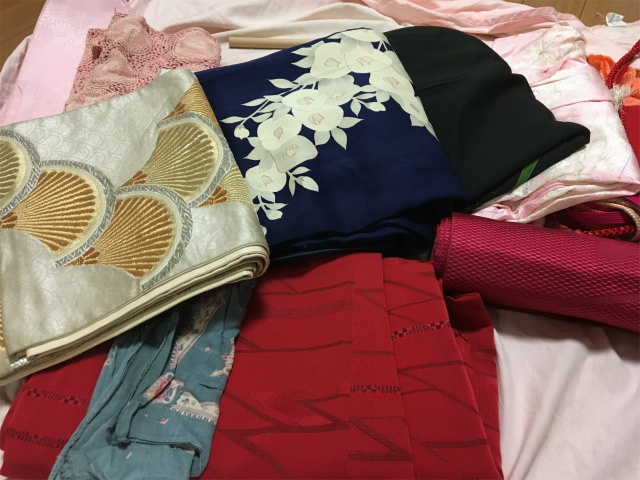

Circular Open Source Fashion#
In week 3 assignment, I was flabbergasted by Jessica Stanley’s the beautiful work.
Kimono is already a zero-waste, modular design, but I wanted it to be redesigned by seamless, modular system.
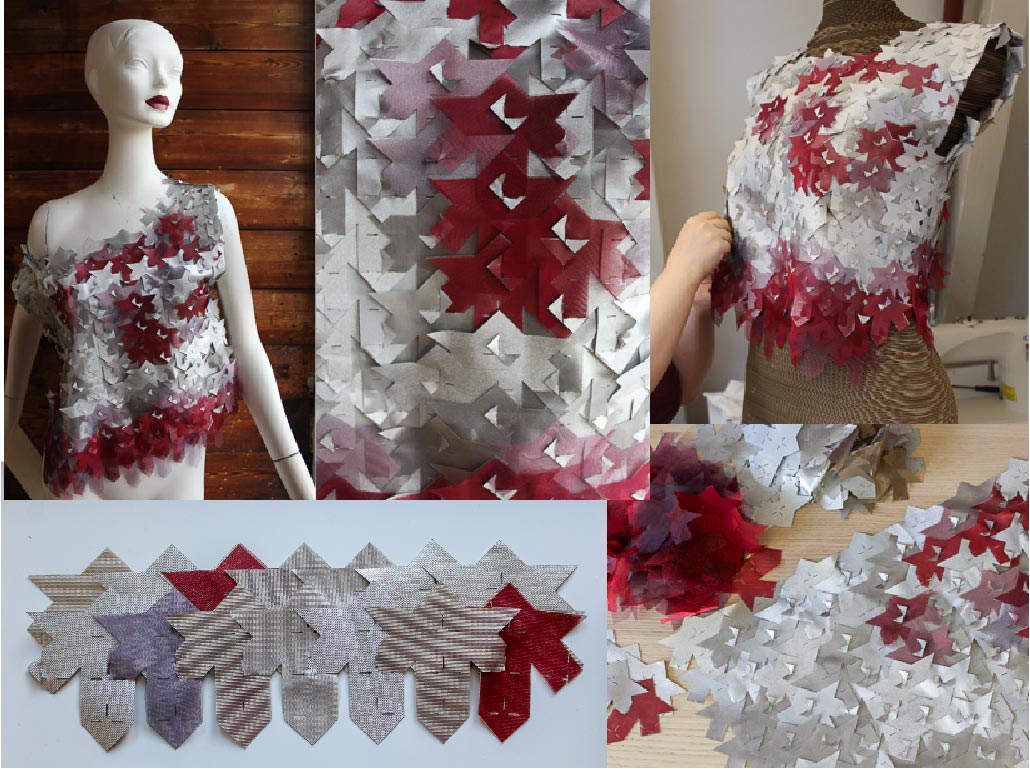
the structure o Kimono#
To understand the structure of Kimono, I joined a paper kimono workshop.
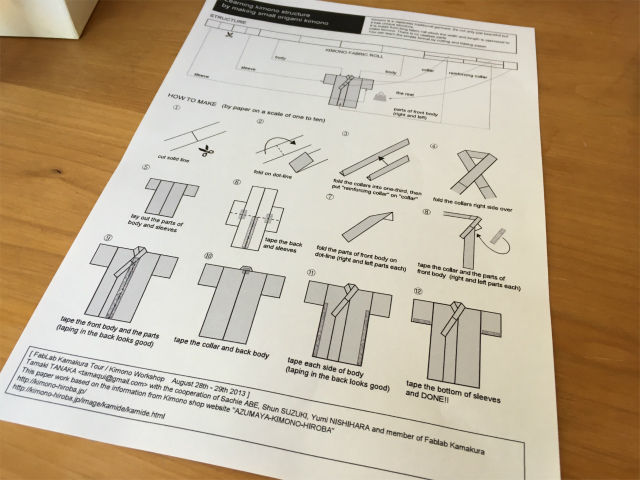
Kimono was made of a long strip of fabric.

Bodies, sleeves, collars and other parts. Each pattern is a rectangle.
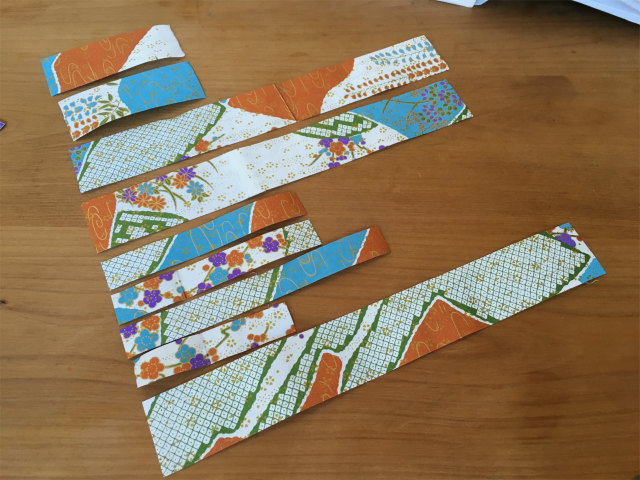

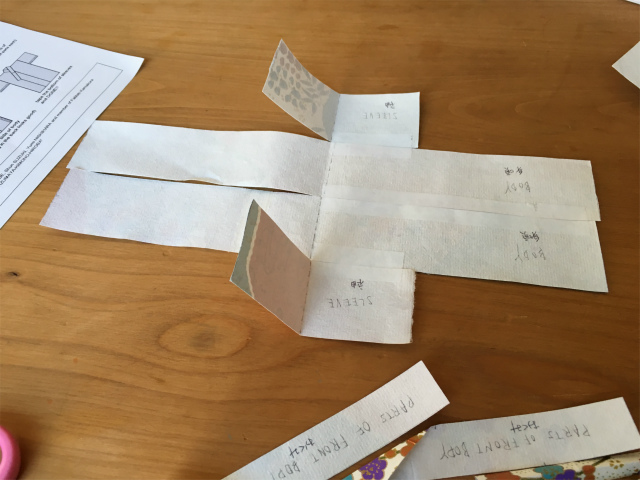
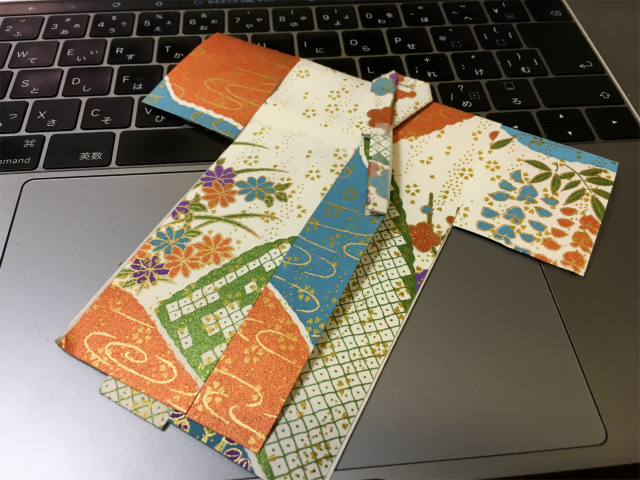
I wanted to understand how fabrics are stitched together in real Kimono. I read books and tried to make one from scratch, I realized I was aiming too high. I decided to do a reverse engineering, which means the disassembling Kimono. It cost me only 3,500JPY(28EUR).
Before disassembling....

Sleeves
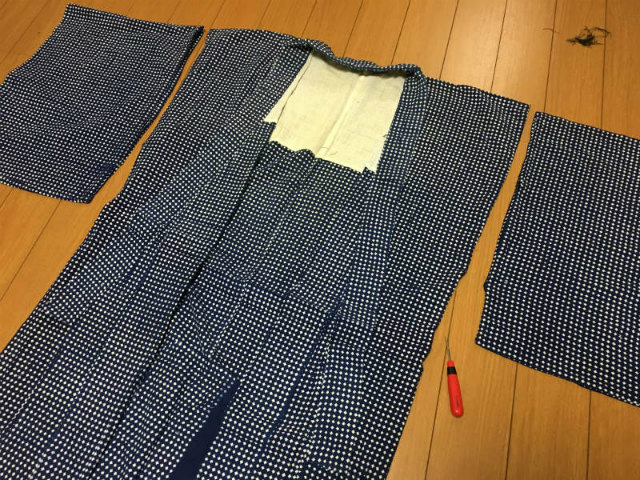
Then, collars.

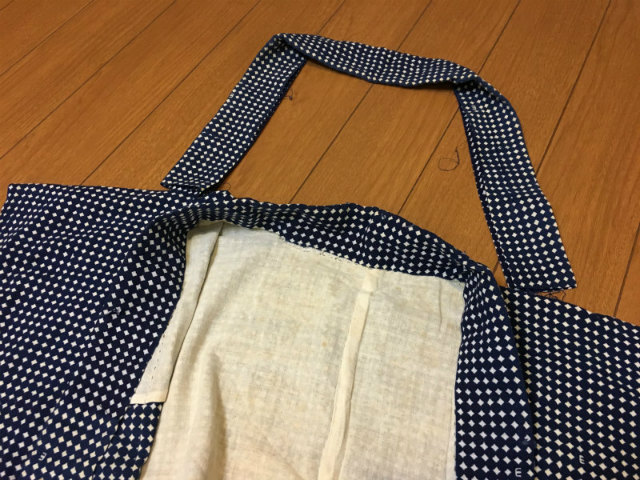
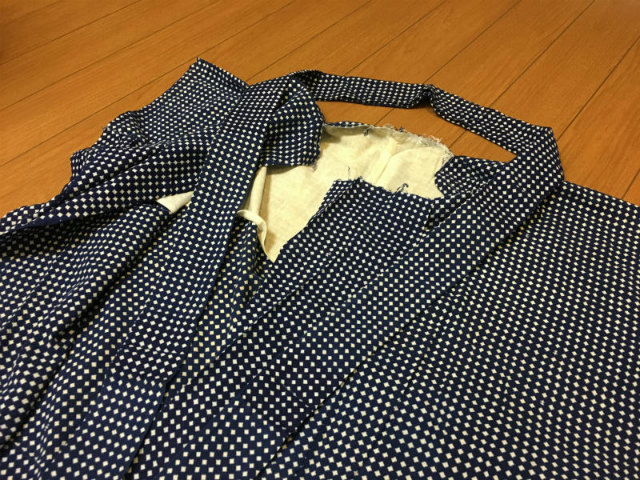
And body
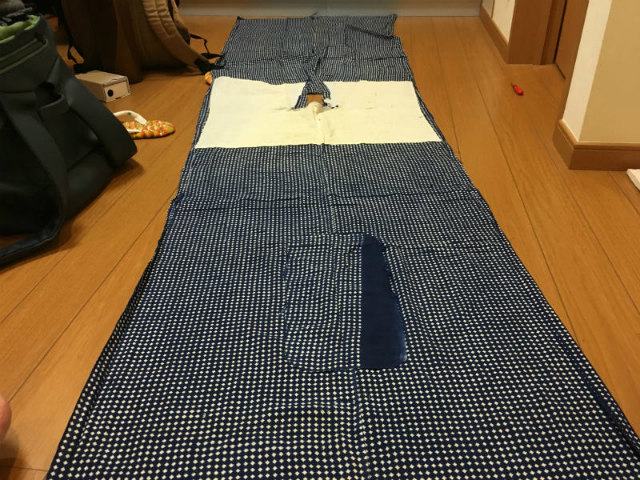
Again, All parts are the shape of a rectangle.
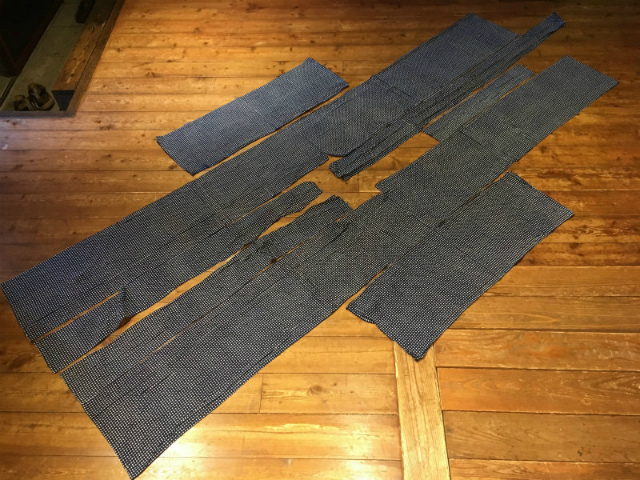
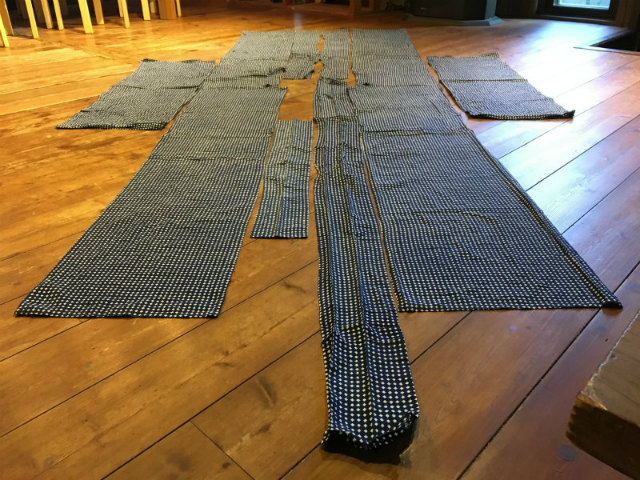
I don’t know how many modules I need for an entire kimono…
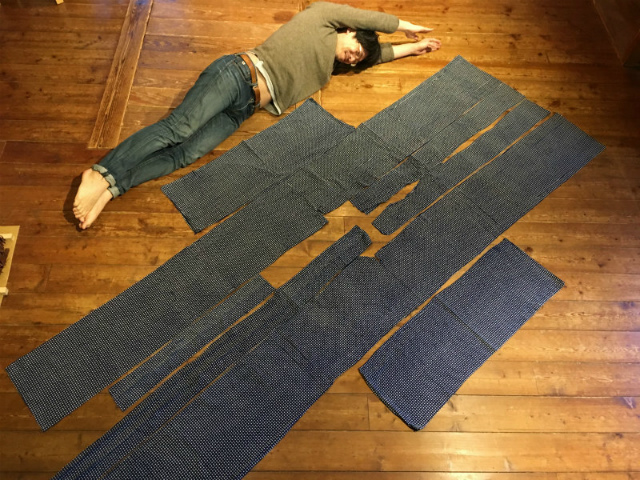
embroidery#
I never operate an embroidery machine by myself, so I tried. I followed a manual but something went wrong.
First trial, the misalignment has occurred. I thought it was because I didn’t lower the frame-secure lever.
Second trial, I secure the embroidery frame, then alignment was right. Thread tension didn’t seem to be right.
Third trial, the misalignment has occurred again. Securing the frame was not a cause.

I went to a sewing machine shop to seek advice.
On seeing my embroidery sample, a shop lady of a sewing machine store told me that a stabilizer fabric was too thin for a fabric I used, and a bobbin thread was not a thread for a bobbin thread.
After I changed a stabilier fabric and a bobbin thread, It seems to go well.

review #2(Feb 12)#
modular design#
I want a module design to zero-waste, but I don’t know hot to disign it. So, I wanted to learn from Jessica Stanley’s great work.

I realized that the half of a module were stacked each other. If I use a sheet of felt(1 mm), the final garmet was very thick.
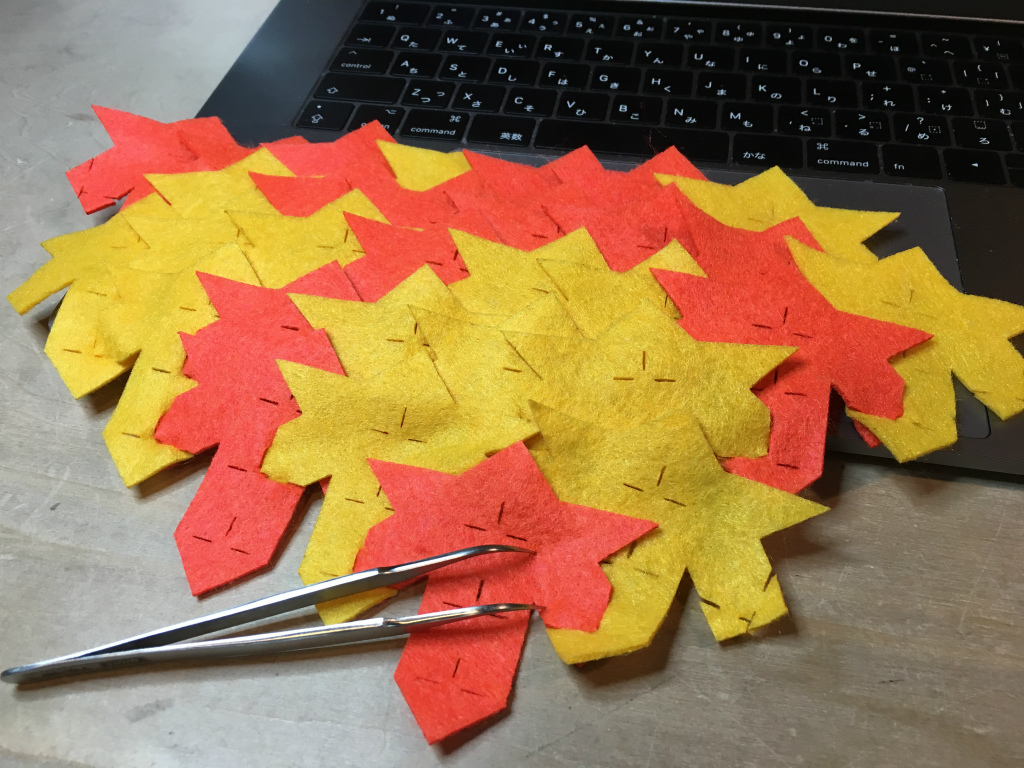
Polyester fabric is much better choice, but I don’t want to know how many modules I need for an entire kimono....
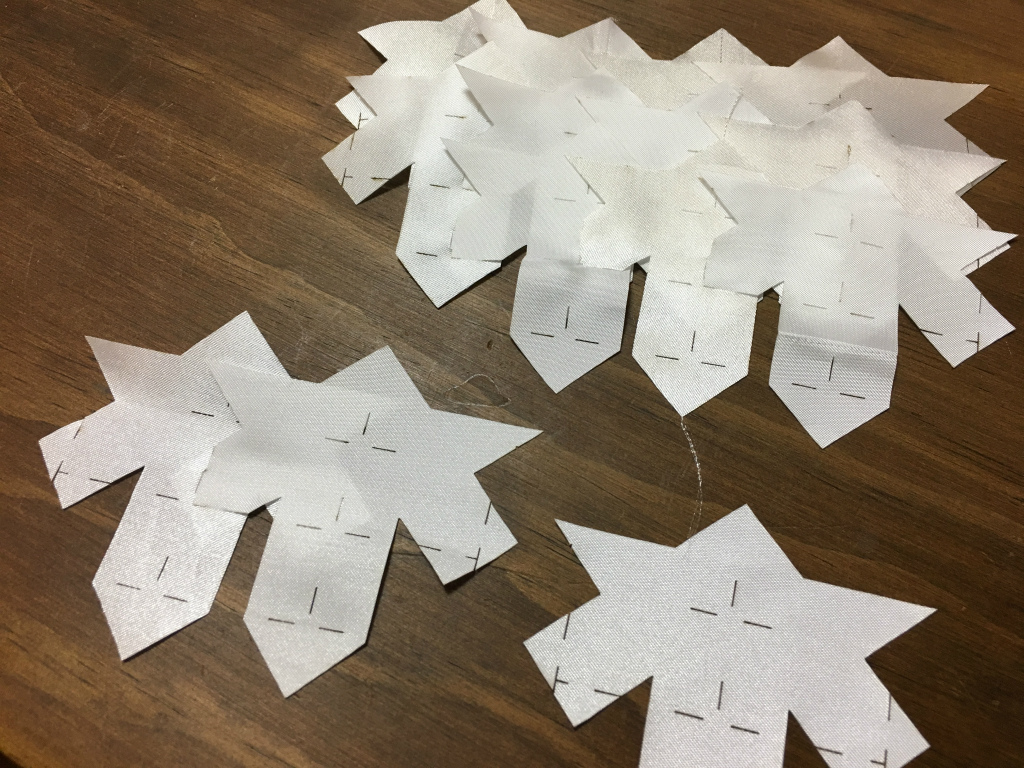
I testcut a natural fiber, but the fraying occurred. Again, synthetic fiber will be the best choice for the lasercutter.
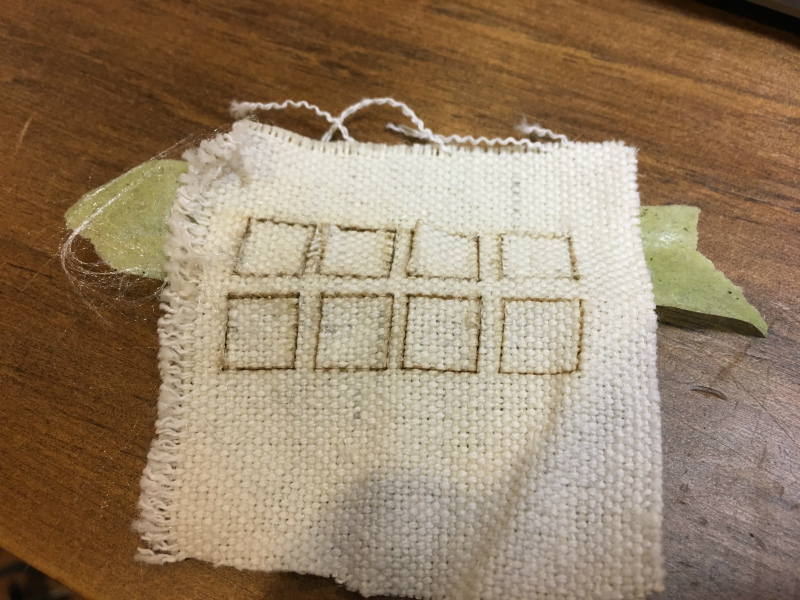
TODOs for the next review#
- the design of module(s), especially ones can hold the weight of themselves.
- the size of module(s)
- the selection of materials
- prototyping a big garment to see if it can hold its weight
- how to reproduce the design of the collar by modular design.
- more detailed documentation
review #3(Feb 25)#
the design of modules#
I want my modular design to be a rectangular (or square) shpae because a Kimono is comprised of rectangle fabrics.
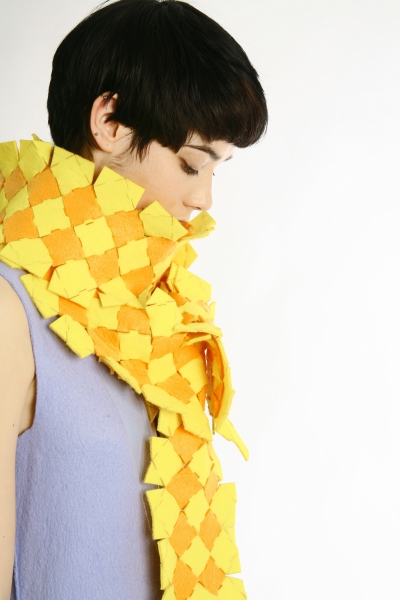
(image source: Eunsuk Hur)
A thing also come into my mind was 襤褸(BORO; means rag). 50 years ago, fabrics are very valuable, a worn cloth was patchworked so many time.

(image source: Gallery Kojima)
the first design#
The first design was 5 cm x 5 cm square with one male/female interlock, because more interlock will need more time to integrate a garment.

Although I thought the result was not bad, the strength of a interlock didn’t look firm enough when I applied the tension. I think it is because the tension was applied one connection part. I had to distribute the tension.
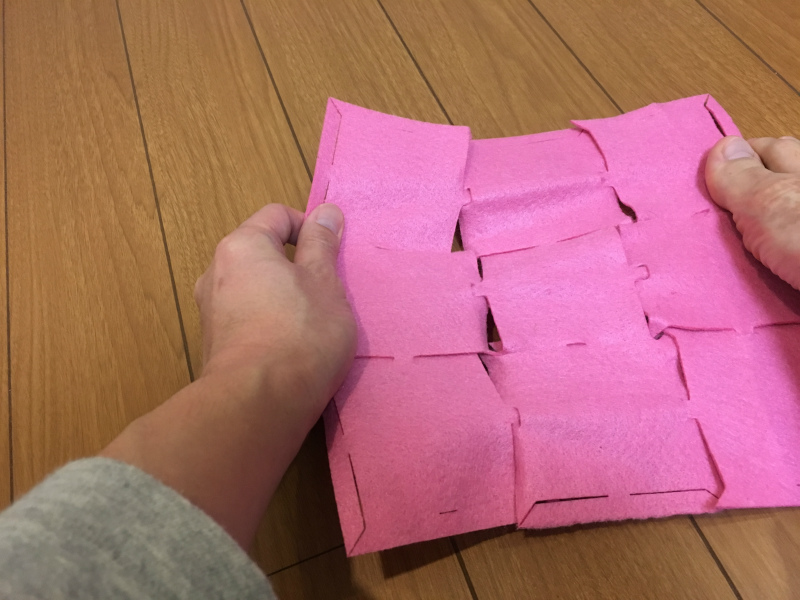
the second design#
The second design was the same size with multiple interlocks to decentralize the tension. Thanks to the redesign, the garment integlity was fair enough.
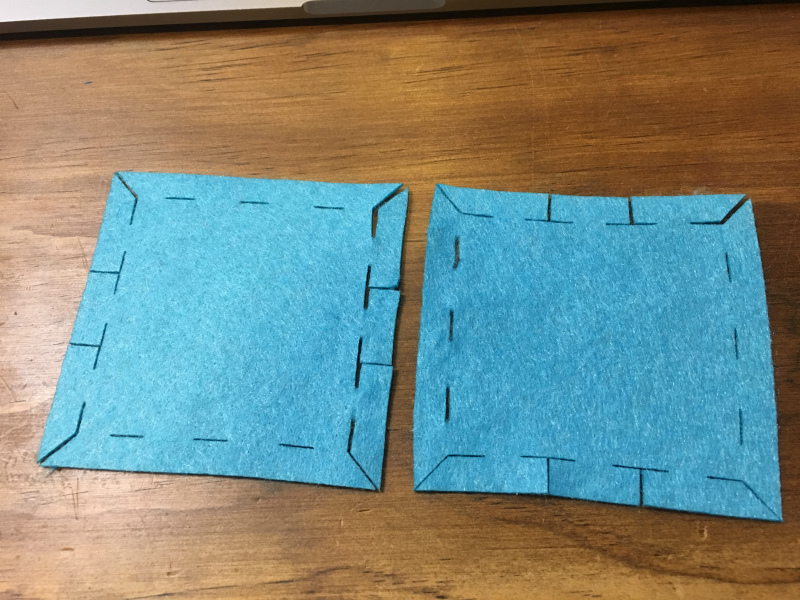
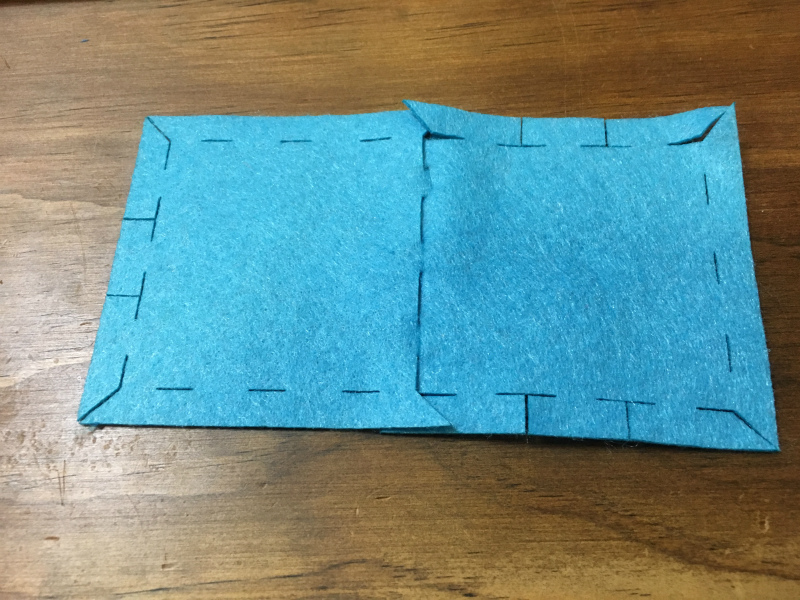
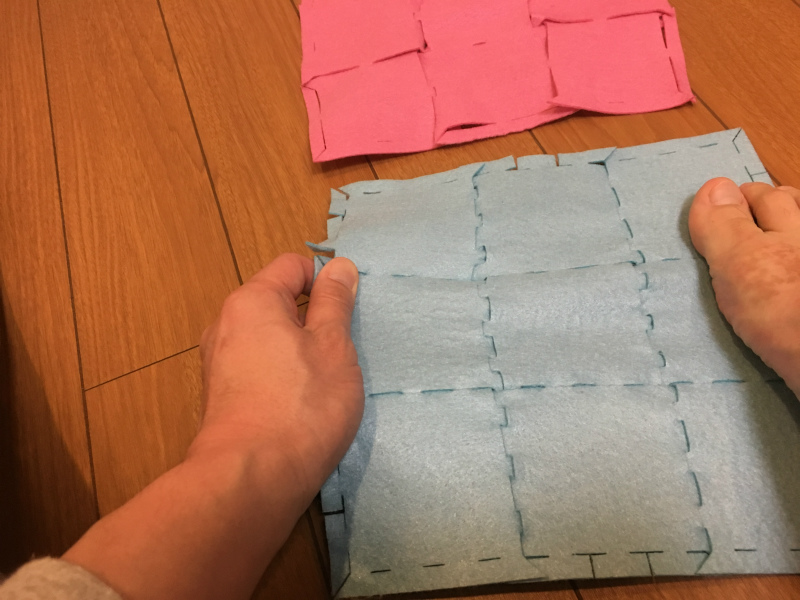
What I didn’t like was that I could integrate them only when the side square was against each other. There was less freedom of integration.

the third design#
During discussion with Kai, a member of fablab Kamakura, he told me that there is no need to place male(female) interlocks against each other. I modified design and made various size of modules.
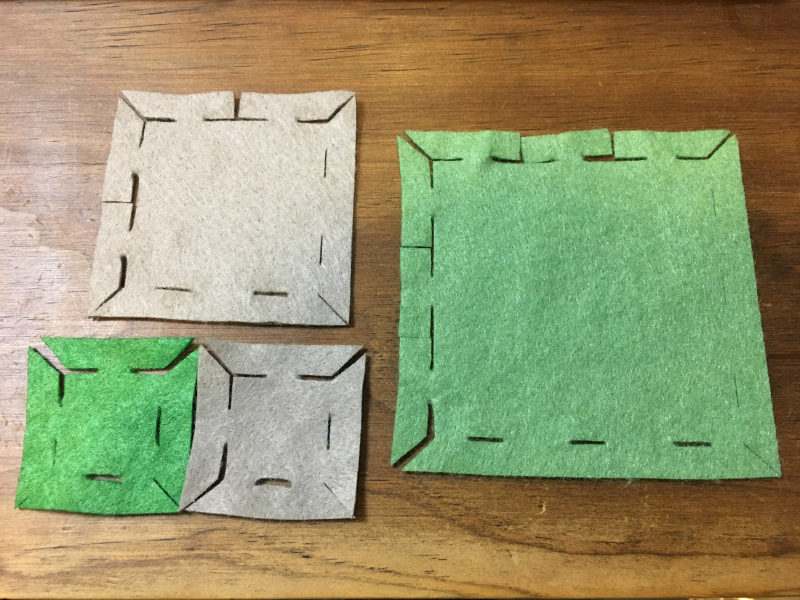
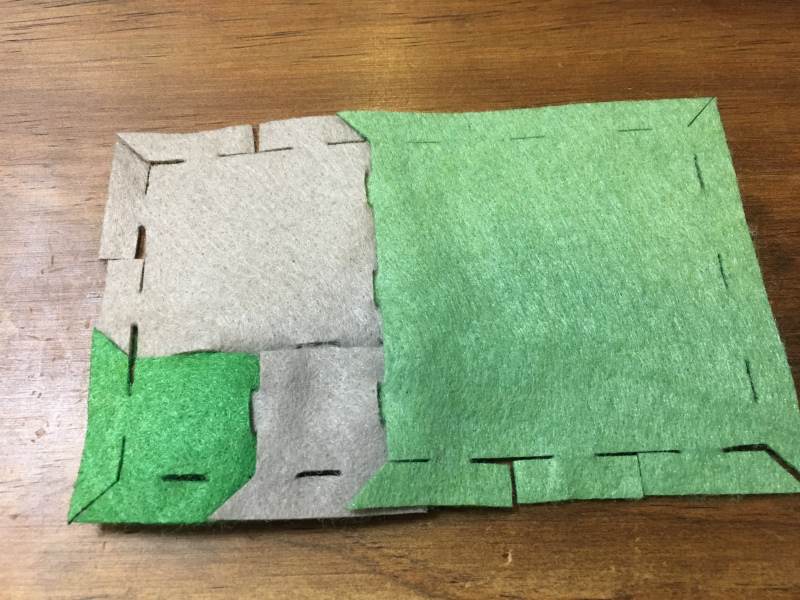
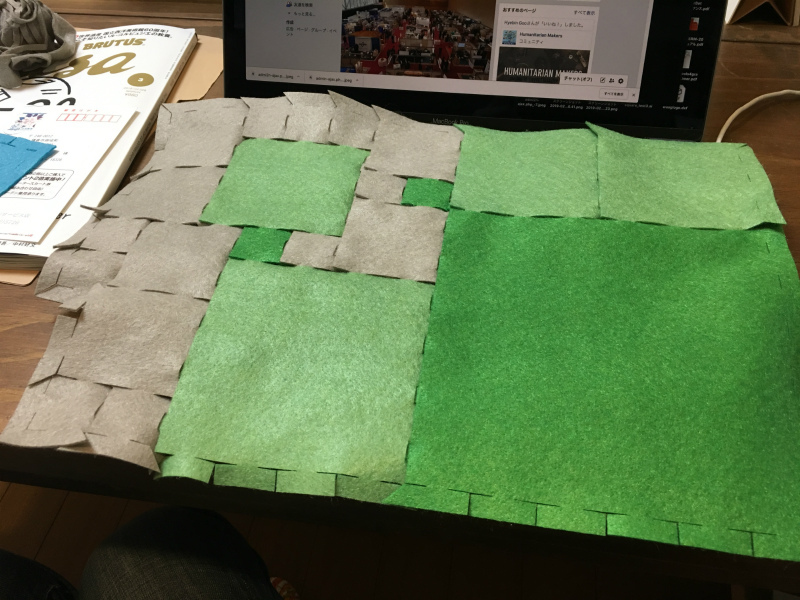
the forth design#
I tried another fabric, organzie. The fabric was beautiful but it didn’t go with my module design…
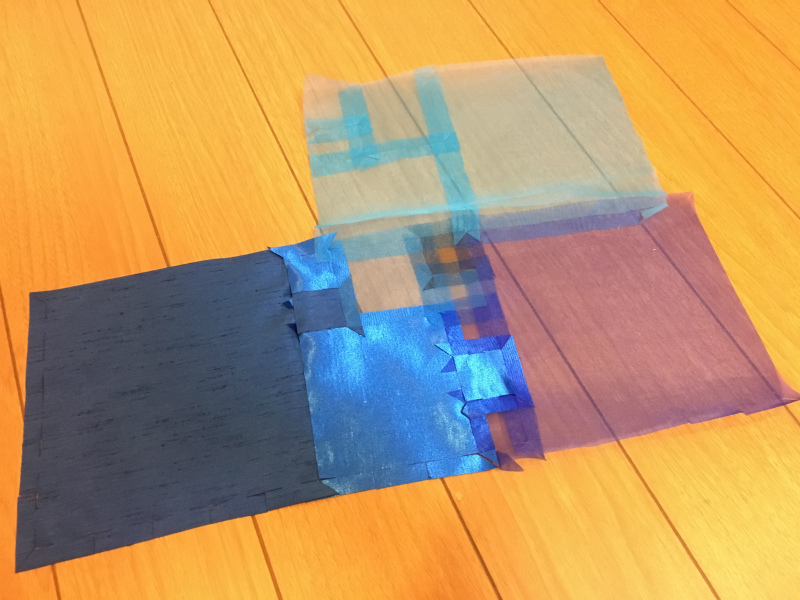
TODOs for the next review#
I believe a big garment can hold itself, so things I have to decide for the next review are as follows
- how to reproduce the design of the collar by modular design.
- electronics
- one more elements out of the 12 assignments…
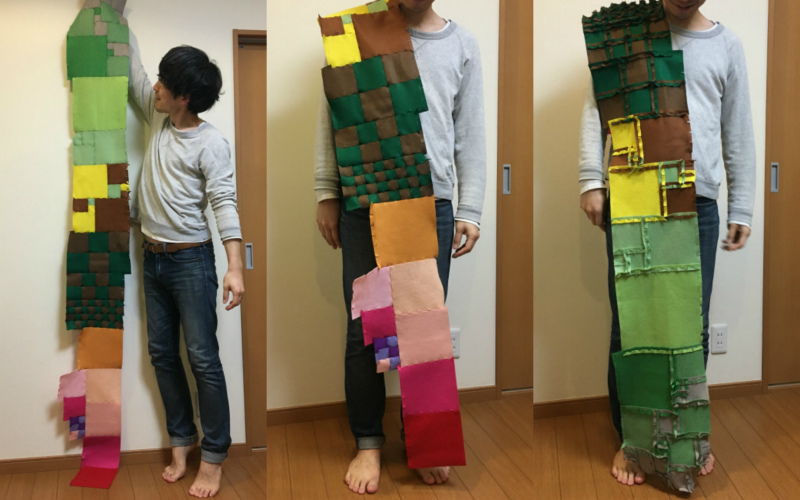
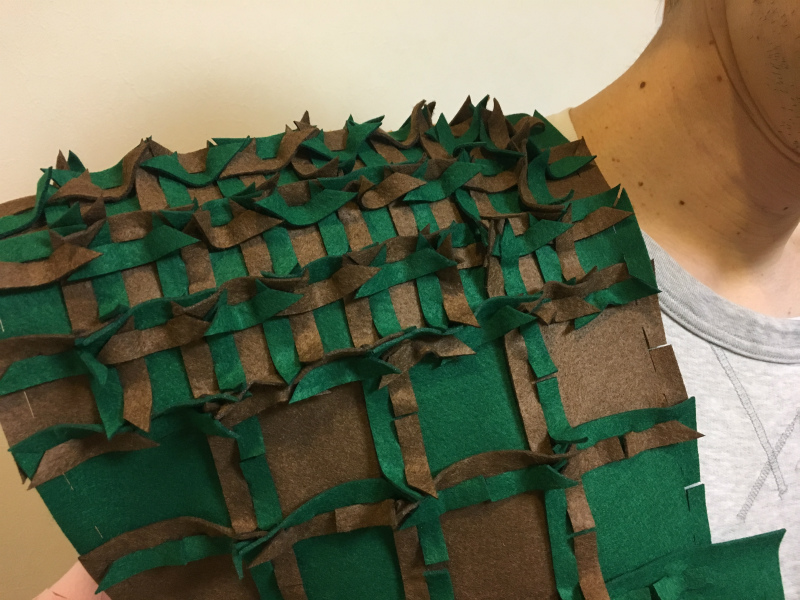
review #4(Mar 11)#
The week of storytelling#
I’ll answer to following questions.
1. (WHAT) The project: title and phrase that describes it (vision/mission)#
Last review, the title was “Kimono++,” but I changed it.
digital (modular?) kimino - reinvent of kimono with digital fabrication technologies
2. (WHAT) A poster (like a pager or advertisement)#
TBD
3. (WHY) Inspiration and State of the art: timeline of projects/research that is relevant to your state of art#
- As the first Japansese fabricademer, I want my first project to be something Japanesque in an obvious manner. As to fabric, kimono is the representative traditional costume of Japan. So I chose Kimono as a motif of my final project.
- I have to admit I know nothing about Kimono before Fabricademy. I grew my interest after I knew following things.
- Kimono is made of a long strip of fabric, 一反(1-tan). 1 tan is the unit for one kimono. It is about 36 cm wide and 1200 cm long.
- Kimono is the zerowaste design. Typical kimono is made out of 8 rectangular shape fabrics, and they are cut out of 1-tan unit fabric.
- Kimono is open source.
- Week3, Circular Fashion, is one of my favorite assignments of all. I was mesmerized by the work by Jessica. Her design was zero waste tessellation design as well as its beauty. I saw great deal in common with Kimono design.
- Based on above things, I chose open source circular kimono as my final project.
5. (WHY/WHO) References: Case studies and existing similar projects (4 max)#
- Jessica Stanley’s Open Source Circular Fashion assignment
- Fragment textiles - square shape modular design
- Eunsuk Hur - square shape modular design
7. (HOW) How does your prototype/project manifest your idea, what it tackles, improves or changes from the state of the art#
- Kimono industry is facing troubles
-
Kimono market is decreasing. Its market size is one sixth of the beginning of 1980, ¥1,800 billion JPY to ¥280 billon JPG.
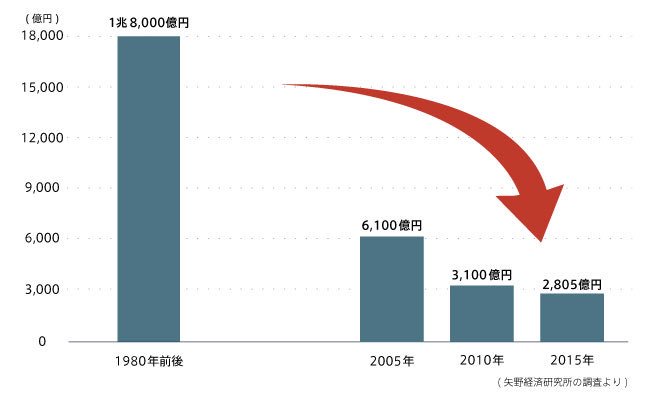 (image source: Yano Research Institute)
(image source: Yano Research Institute) -
The Price of kimono continued to increase during the period. Kimono(着物) originally means ‘things to wear’, ‘着’ wear ‘物’ thing, but Kimono became a kind of luxury product.
- The market trend is changing recently. Young people enjoy less expensive secondhanded kimono or synthetic fiber kimono, and Kimono-sharing (rental store) market grows rapidly.
- A study showed that “the “value of a kimono” differs for kimono wearers (indicated by a high frequency of wearing kimonos) and kimono buyers (indicated by a high annual expenditure on kimonos), who purchased them for formal occasions.”
- The research also said “Kimono wearers find value and enjoyment in relatively cheap antique or ready-to-wear kimonos, made from synthetic fabrics by mixing and matching colors and designs. “
6. (for WHO) Case study - user experience, make an assumption of a person (character) that uses it (if applicable)#
Based on the research above, I want “kimono wearer” to enjoy the freedom of color and design of kimono.
8. (HOW) Technical research: Outline of how it materializes the goal/focus of the project#
- I pose two restrictions to my final project design based on the original kimono design.
- open circular fasion, module design is square shape.
- zerowaste design.
- the design of interlocking
- the number of male/female interlocking part
- the way of placement of male/female interlocking. They are facing against each other.

- I used synthetic fiber(polyesther felt) because it is favorable for lasercutting. Natural fibers caused frayings.
9. (HOW/DOCUMENTATION) User manual if it is a machine or kit#
10. Message to the world: what is the project’s message? in one line define the future possibilities of the project.#
electronics#
I programmed an example sketch to attiny85. I used two 3 V coin cell batteries(It is not recommended that the max. voltage of attiny is 5.5 V. I need diodes.)
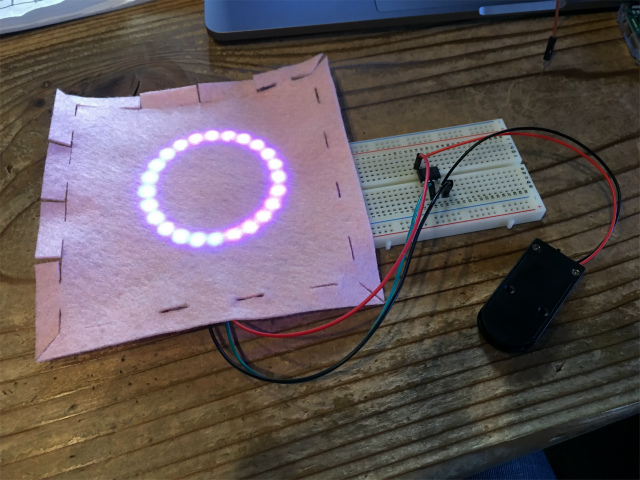
I embedded LEDs backside of a module like a picture below.

It was painstaking task to solder 66 points.
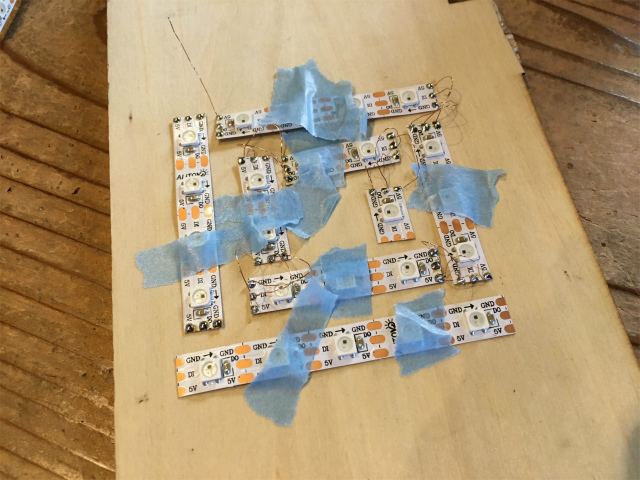
I used a glugan to paste neopixels onto a module. White glue can work as a light diffuser. I programmed a neopixel sample code to an ATtiny85 and connected it to 6 V(3 V coin cells) battery via a diode(1N4148) not to excel the upper limit of the operating voltage.
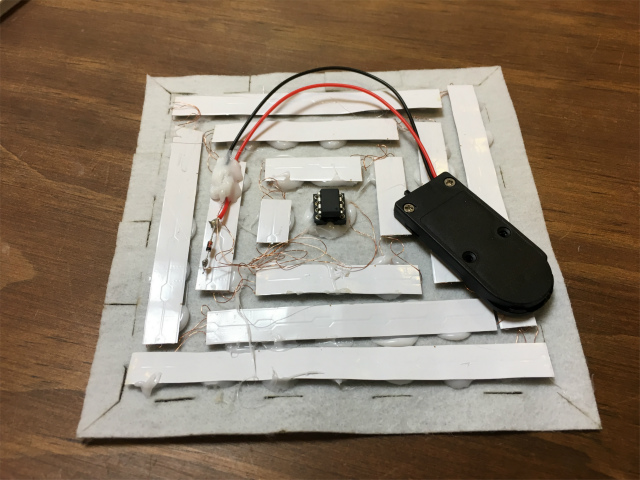
It looks like a usual module, doesn’t it?

lasercut and assembly#
I designed various modules with Fusion 360.

Material I used is polyester felt which I bought from SUN FELT.
In front of a large cutting table and a fabric, I feel like I become sort of a fashion designer.
Michelangelo said “Every block of stone has a statue inside it and it is the task of the sculptor to discover it.” Great fashion designers feel the same way from a fabric?
I can’t see any…
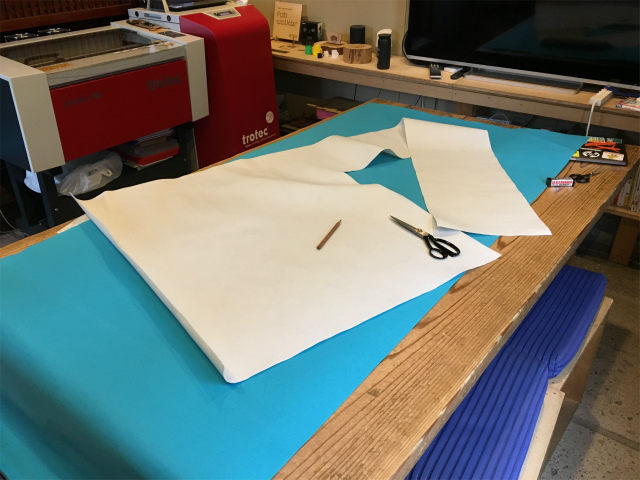
It took me two days to cut out modules from a strip of felt. I thought I could assemble a whole by myself, it was utterly wrong. Youka helped me with assembling modules. It took almost 10 days to make a whole kimono.
Here are some making processes.
I thought it is a good idea to make a large module first, and assemble them to a Kimono.

It was not good idea at all… First, I like this pattern and color but don’t like it in a Kimono. I didn’t use it and disassembled later.
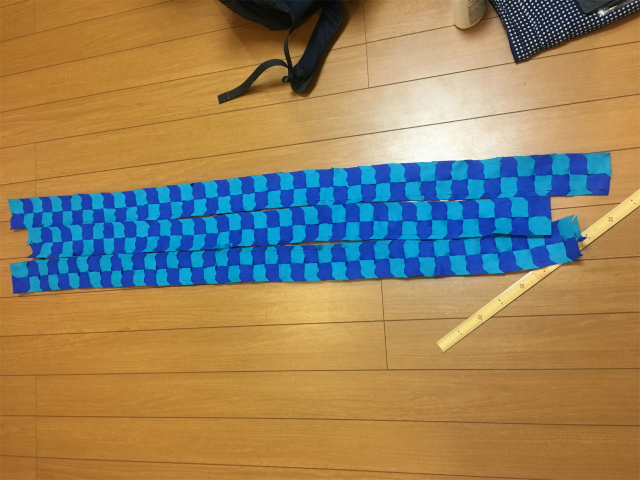
A pair of tweezers was the best companion during assembly.
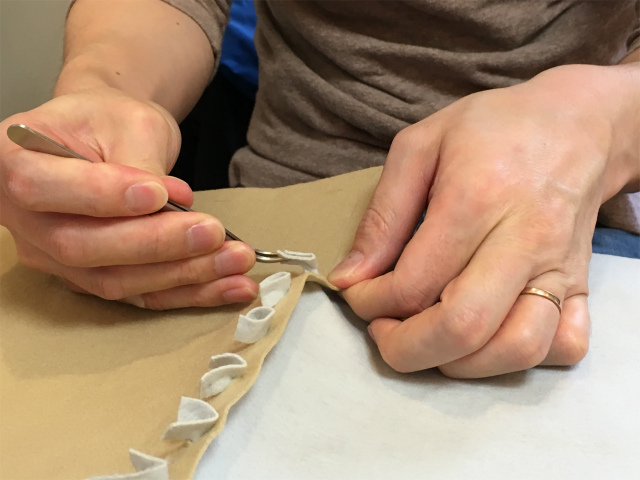
I assembled modules in a commuting train.
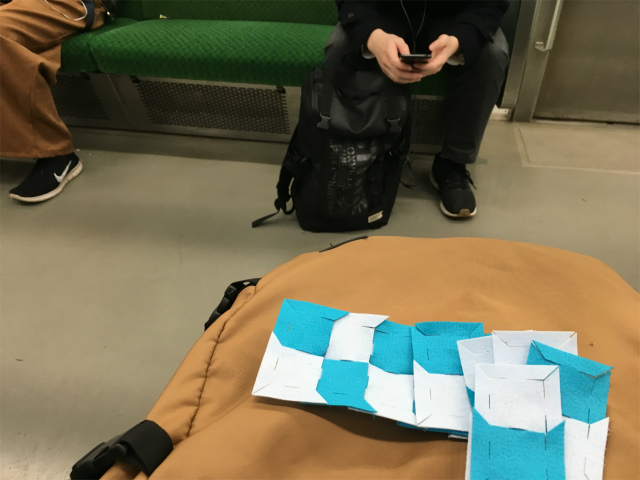

I deeply felt how amazing fashion designers are. The design of a part and that of a whole is completely different.
The color and the design as a part is fine, but not fit for the total design.
It is one of concepts of Kimono ++, but being able to assemble, check and modify the design, is one of exciting process.
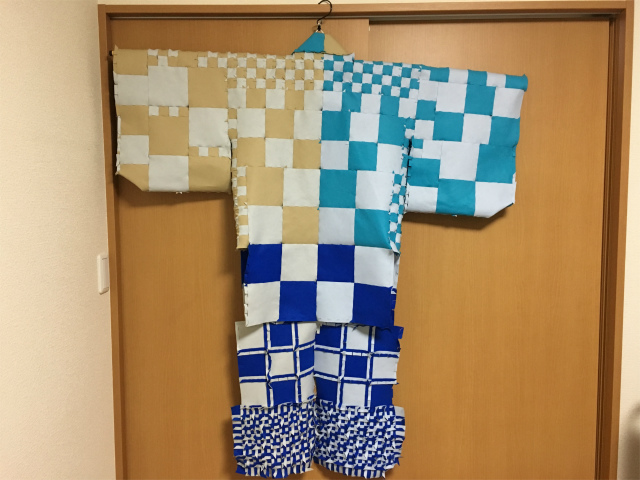
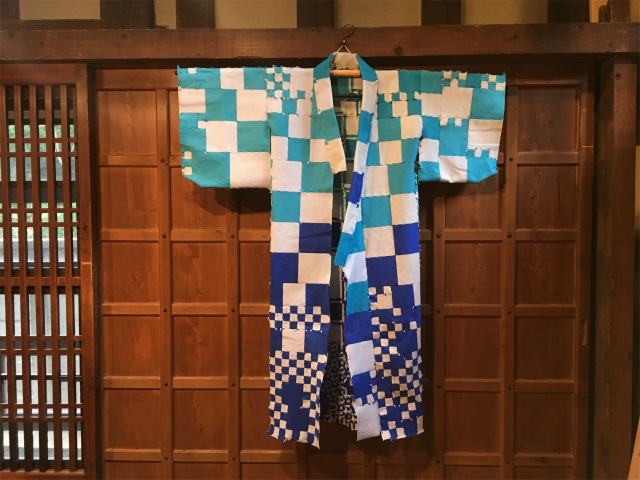
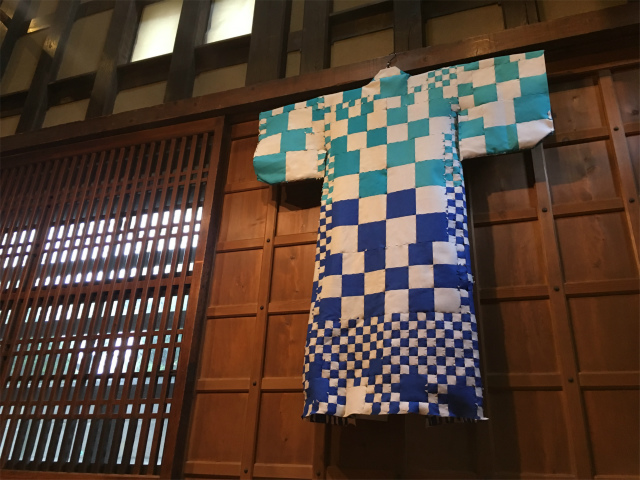
Asako, Fab Academy Alumnus, kindly offered her Obi(sash) and helped get dressed.
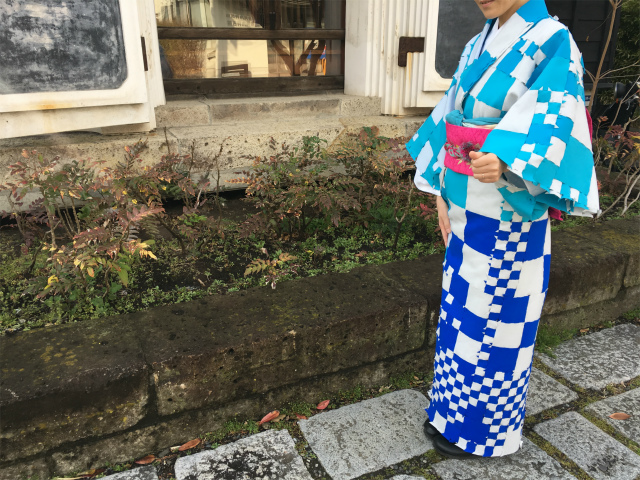
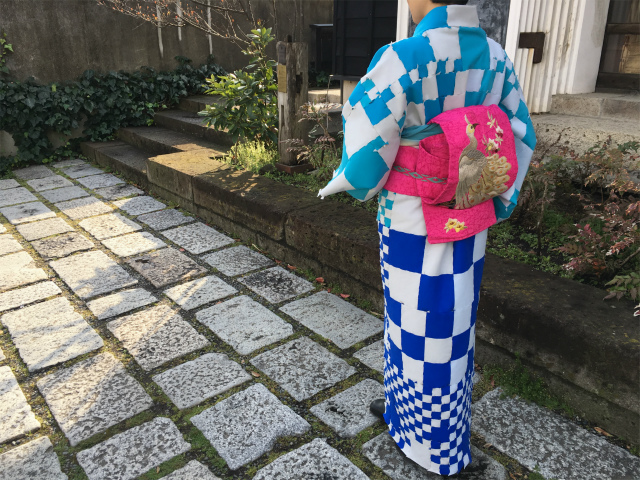
references#
- 初心者が失敗しがち。刺繍に必須な接着芯の使い方を知ろう!
- Kimono Market in Japan: Key Research Findings 2018 - Yano Research Institute
- Digital Kimono: Fast Fashion, Slow Fashion? - Fashion Theory, Volume 22, 2018 - Issue 3
files#
- OS modular design file (.f3d) - Fusion 360
- tessellation tiling design for lasercutting(.zip) - Archived pdf files
- embedded programming file for ATtiny85(.ino) - Arduino file